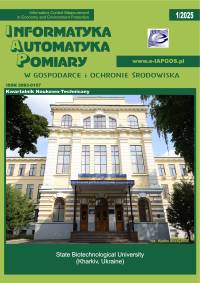METHOD OF SAFE LANDING THE EMERGENCY QUADROCOPTER
Bohdan Blagitko
blagitko@gmail.comIvan Franko Lviv’s National University, Faculty Electronics and Informational Technology, Department Radiofhysics and Computer Technology (Ukraine)
http://orcid.org/0000-0002-0516-9353
Yuriy Mochulsky
Ivan Franko Lviv’s National University, Faculty Electronics and Informational Technology, Department Radiofhysics and Computer Technology (Ukraine)
http://orcid.org/0000-0001-5488-4065
Abstract
By means of mathematical modelling, the main features of emergency landing of quadrocopter are determined. The results of simulate landings of the quadrocopter in cases of failure of one of four pairs of electric motor screw are given. The methods of safe landing of an unmanned quadrocopter in case of failure of one of four pairs of motor-screw are proposed. The basis of the proposed methods is to use a parachuting effect. Parachuting achieved by forced off the power of the motor, which is located at the opposite end of the same yoke as faulty motor. As a result, the vertical speed of the quadrocopter at the time of landing significantly decreases in comparison with the speed of free fall.
Keywords:
quadrocopter, 3-axis gyroscope, 3-axis accelerometer, 3-axis magnetometerReferences
Blagitko B., Mochulsky Y.: Emergency landing of quadrocopter in unmanned flight. Electronics and Information Technologies 8/2017, 137–142.
Google Scholar
Blagitko B., Mochulsky Y.: Mathematical modeling of quadrocopter stabilization in flight. Electronics and Information Technologies 3/2013, 96–107.
Google Scholar
Blagitko B., Zaiachuk I., Kit L., Mochulsky Y.: Modeling of the process of control of vertical take-off and landing of unmanned quadrocopter. Physical-mathematical modeling and information technologies 2/2012, 111–117.
Google Scholar
Blagitko B., Zaiachuk I., Mochulsky Y.: Mathematical modeling of the effect of sensor features on the flight process of an unmanned quadrocopter. Physical-mathematical modeling and information technologies 21/2015, 22–29.
Google Scholar
Huang H., Hoffmann G. M., Waslander S. L., Tomlin C. J.: Aerodynamics and control of autonomous quadrotor helicopters in aggressive maneuvering. IEEE International Conference on Robotics and Automation, May 2009, 3277–3282.
Google Scholar
Marcelo B.,.Sampaio R.C.B, Bounabdallah S., Perrot V., Siegwart R.: In-Flight Collision Avoidance Controller Based Only on OS4 Embedded Sensors. Journal of the Brazilian Society of Mechanical Sciences and Engineering XXXIV(3)/2012, 294–107.
Google Scholar
Mochulsky Y.: Matlab In Physical Research: tutor. – method. manual. VTS LNU them. Ivan Franko, Lviv 2004.
Google Scholar
Nartin P., Salaun E.: The True Role of Accelerometer Feedback in Quadrotor Control. IEEE International Conference on Robotics and Automation, Anchorage, May 2010, 1623–1629.
Google Scholar
Wissiere D., Bristeau P.-J., Martin A., Petit N.: Experimental autonomous flight of a small-scaled helicopter using accurate dynamics model and low-cost sensors. Proceeding of the 17th Word Congress The International Federation of Automatic Control. Seoul Korea 2008, 14642–14650.
Google Scholar
Authors
Bohdan Blagitkoblagitko@gmail.com
Ivan Franko Lviv’s National University, Faculty Electronics and Informational Technology, Department Radiofhysics and Computer Technology Ukraine
http://orcid.org/0000-0002-0516-9353
Authors
Yuriy MochulskyIvan Franko Lviv’s National University, Faculty Electronics and Informational Technology, Department Radiofhysics and Computer Technology Ukraine
http://orcid.org/0000-0001-5488-4065
Statistics
Abstract views: 303PDF downloads: 134
License

This work is licensed under a Creative Commons Attribution-ShareAlike 4.0 International License.




